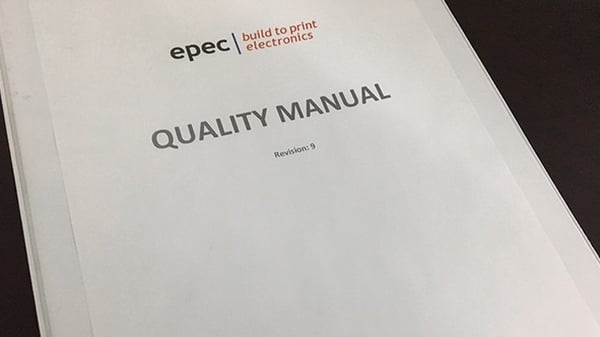With the introduction of ISO 9001:2015, which specifies requirements for quality management systems, the statement “quality management system documentation shall include a quality manual” no longer need apply. Many celebrated this as a reprieve from previously having to fully document their quality management system. However, eliminating the supplier quality manual altogether could be a dangerous takeaway on the new standard’s intention.
The documentation was often considered worthless; just extra paperwork that added no real value other than to appease ISO during their audit. The truth is, the documentation within a supplier quality manual and procedural manuals always did and still does have value, even when it may not have seemed clear on the surface.
Reassuring Customers and Auditors
As a customer, one wants assurance that their supplier has adequate control, such as evidence that documented procedures are being followed, proper training of personnel is taking place, and proof of business metrics analysis to ensure proper focus on continuous improvement.
If, when performing a supplier audit, the supplier has difficulties producing evidence of controls it can lead to the validity of the supplier’s claims being questioned. What better reason for an ISO auditor to dig deeper when a supplier struggles to produce concrete evidence of controls?
Benefits of Maintaining a Quality Manual
>With the ISO 9001:2015 standard, continuing efforts towards maintaining a quality manual will assist in communication of the following areas:
- Organizational Chart
- Process Overview
- Records
- Quality Policy
- Process Responsibilities
- Human Resources
- Validation of Processes
- Control of Monitoring and Measuring Devices
- Measurement, Analysis, and Improvement
- Control of Nonconforming Product
- Continual Improvement

Epec's Quality Manual
1. Organizational Chart
As part of a company overview, the organizational chart exhibits the company’s key personnel and defines the structure of communication from the top down, or vice versa.
2. Process Overview
An overview of the company processes or “flow chart” is a great starting point to introduce documented company procedures and the interrelationship of processes.
3. Records
Highlighting the types of records that are kept and the format they are retained in will assist in the ease of producing requested records.
4. Quality Policy
Communication of the quality policy and the focus of management commitment should be readily evident and functions as the cornerstone of a strong quality management system.
5. Process Responsibilities
Understanding the processes and the responsibility structure of each process will ensure the correct personnel are audited for the correct processes. This will improve the efficiency of the overall audit.
6. Human Resources
Communicating strong competence, awareness, and training programs should be key for any supplier's quality management system.
7. Validation of Processes
This is the supplier’s opportunity to focus on control of production from incoming raw materials to inspection of final products.
8. Control of Monitoring and Measuring Devices
A calibration program is vital to any supplier’s processes and being able to exhibit this program in your quality manual will aid an auditor in quickly tracing the history of identified tools.
9. Measurement, Analysis, and Improvement
Communicating metrics and what is measured will focus the auditor’s attention to the proper departments for the proper metrics. This is where a supplier should point out how customer satisfaction is measured and elaborate on their internal audit program.
10. Control of Nonconforming Product
A significant area of concern for both an auditor and a customer, control of nonconforming product procedures should reflect foolproof methods and highest priority among all personnel. All personnel should have the authority and responsibility to report a nonconformance during any stage of the realization process.
11. Continual Improvement
The ability to accentuate your continual improvement program helps increase opportunities for better defining the corrective and preventative action process.
Summary
As anyone can see, though not officially required by ISO 9001:2015, continued maintenance of a supplier quality manual makes good business sense when having to participate in a customer or ISO audit. All companies talk about quality, but very few back it up with true investment in the people, systems, equipment, technology, and processes that go into creating a supplier every customer can trust.
Key Takeaways
- ISO 9001:2015 no longer requires a quality manual but eliminating it entirely risks weakening evidence of controls during customer or ISO audits.
- A quality manual reassures customers and auditors by providing proof of documented procedures, proper training, and continuous improvement efforts.
- Key elements such as organizational charts, process overviews, and responsibilities improve communication, traceability, and audit efficiency.
- Controls for nonconforming products, monitoring devices, and continual improvement demonstrate a supplier’s commitment to reliability and accountability.
- Maintaining a quality manual is still good business practice, serving as both an audit resource and a clear demonstration of a company’s quality culture.
















